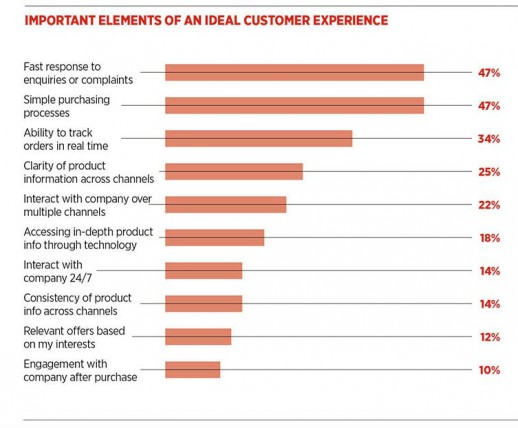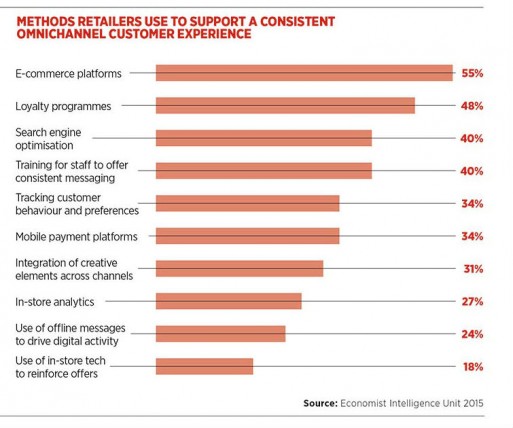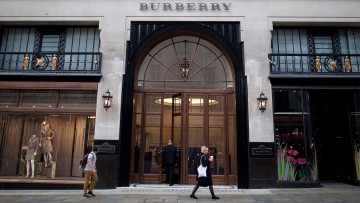Returned goods can be the bane of a retailer’s day, a processing cost with no sale to balance the outlay. And thanks to the anonymity of online shopping, goods often come back scuffed, marked or obviously used. Research by retail analyst Conlumino found that returns cost retailers £95.8 million in 2013, a figure that will only rise.
But on another level returns are an untapped opportunity. A recent YouGov report revealed that 63 per cent of customers say the ease of the returns process influences where they shop.
“In today’s omnichannel environment, customers are making more demands on how they return products,” says Niklas Hedin, chief executive of delivery management software company Centiro. “This means returning a wider variety of goods from any number of locations.”
Simplifying returns
Canny retailers are going further. Online fashion retailer ASOS positively embraces returns, partly out of necessity as returns make up 37 per cent of total orders, but also in the belief that being able to easily return items is an integral part of a positive customer experience. An easy return helps ensure a sale next time round.
Retailers must constantly strive to deliver a better experience than the next available listing on Google
But experts say returns can work even harder for retailers, further enshrining customer loyalty. “For example, a retailer could provide regular high-net-worth customers with different returns options,” says Mr Hedin.
“This could take the form of a certain number of free home pick-ups throughout the year or the ability to select more precise collection windows. Ultimately, in an increasingly competitive market, a more personalised approach to returns could help retailers differentiate their service.”
 Returns is a small but increasingly vital part of the customer journey and exemplifies the new retail reality that no part of the customer experience can be left to chance. In a world of infinite choice, a disappointed customer is one who may be lost forever.
Returns is a small but increasingly vital part of the customer journey and exemplifies the new retail reality that no part of the customer experience can be left to chance. In a world of infinite choice, a disappointed customer is one who may be lost forever.
“A retailer which delivers a bad experience is instantly replaceable with one that provides something incrementally better. Retailers must constantly strive to deliver a better experience than the next available listing on Google,” says James Gambrell, chief executive of apparel customer engagement company Fits.me.
The digital world of retail
A new generation of customers, expect flawless back-end operations, such as returns and stock control, alongside a seamless digital experience, including a responsive, user-friendly website that works as well on a smartphone as it does on a laptop. In 2015, these factors qualify as absolute basics.
But savvy customers, aware of a glut of options, increasingly look for points of difference beyond this base level. The past year has finally laid to rest the once widespread belief that online shopping meant the inevitable demise of the high street. Instead, forward-thinking retailers have differentiated themselves by combining the two in surprising ways, making for a consistent and consistently compelling customer experience.
“Customers expect to experience elements of a brand’s online presence within its physical stores, and vice versa, with the physical store experience influencing the online experience,” says Adam Goran, divisional director of customer engagement at Grass Roots Group. Burberry is a prime example, bringing elements of its online Burberry World into the exciting, digitally-driven physical space of its flagship London store.
 Click and collect
Click and collect
The imaginative combination of digital and physical retail has transformed the fortunes of catalogue retailer Argos, which not long ago was considered dead in the water. This summer it became the first British retailer to notch up £1 billion in mobile sales, thanks to its enthusiastic adoption of click and collect. Customers order online and pick up in store, side-stepping the one frustrating element of internet shopping of waiting for a parcel to arrive and having to be in when it does.
“The technology now exists to make the distinction between digital and physical purchasing increasingly moot,” says Henning Ogberg, general manager for Europe, the Middle East and Africa at SugarCRM, which provides customer relationship management solutions. “The recent explosion of click and collect serves as an excellent example of two previously separate areas of retail working as one.”
Click and collect is one part of the seamless omnichannel retail experience customers demand, but it’s also recognition of the need to humanise the potentially anonymous world of digital shopping. Customers want to be treated as individuals and offered choices relevant to their needs. Technology can drive a slicker experience, but also a more tailored one.
“Customers are constantly changing their preferences and habits,” says Jed Mole, European marketing director at data analytics company Acxiom. “Customers’ lives and focuses can change instantly as they change jobs, move house, get married or have a child. Retailers need to understand at which life-stage the customer is at and respond accordingly.”
Customer data analytics
Data can help them do that and data from social media is an increasingly key ingredient, giving retailers the opportunity to identify not just what customers buy or browse, but what they like, how they live and what they aspire to. It can help retailers target customers with useful, personalised promotions, rather than irritating generic offers.
There is danger in social media too, of course. A disgruntled customer taking his gripe to Twitter can do considerable damage, but a quick resolution to a complaint made over social media or a humorous response to a customer comment can help to humanise a brand.
Indeed, the depth of information now available gives retailers the chance truly to individualise communication with the customer, says Mr Ogberg. “These ever-evolving technologies allow retailers to be less big brother and more like a really good friend, caring, knowing and discreet.”
And that, perhaps, is the key to good customer experience. Data can personalise the shopping experience on and offline, whether helping customers find a product easily, pinging a personalised offer to their smartphone in-store or suggesting relevant companion purchases. Innovative collection and returns processes recognise the complexities of their lives and give them one less thing to worry about. In-store environments don’t just promote, in the best cases they also inspire and delight.
What it all represents is a new recognition of retail’s human core. “Like music, shopping is in our DNA,” says David Lawrence, director of planning and insight at retail marketers TCC. “It’s not just about doing the chores, it’s about socialising, exploring and trying new things. Retailers must respond to this need.”
Case Study: Burberry cuts a digital dash
Burberry’s decade-long transformation to the epitome of luxury chic has been achieved by identifying a new, young customer base and giving them the digitally driven experience they recognise and appreciate.
Take the company’s flagship Regent Street store, dubbed “Burberry World Live”, which aims to blur the distinction between Burberry’s on and offline presence. The store features a series of full-length magic mirrors that double as video screens and play appropriate multimedia content when an item chipped with a radio-frequency identification or RFID tag comes close.
Shoppers can pick up a coat or handbag and watch a video of it draped around the elegant frame of a supermodel or being lovingly created by a master craftsman, just as they might if they were browsing Burberry’s online store.
Burberry started out as a raincoat company, of course, and digital rain showers occasionally sweep through the store, using the magic mirrors as their backdrop.
It’s all different, playful and, given Burberry’s recent history, not all that surprising. Burberry got the point of digital before most and currently boasts nearly 17 million fans on Facebook and 4.5 million Twitter followers, giving it a huge community of online advocates. By listening closely to all that social media buzz, Burberry gets a real insight into the minds of its customers.
This information is used to drive innovative digital campaigns and stunts. Earlier this year the company let followers take photos of one of its fashion shows from anywhere in the world via a tweet-activated camera.
Digital is at the heart of Burberry’s customer engagement strategy. It might feel like content creation has become almost as important to the brand as selling clothes – Art of the Trench, for instance, lets customers download pictures of themselves in the iconic Burberry trench coat – but Burberry doesn’t make the distinction. It thinks customers derive moments of pleasure from all the different ways they interact with the brand, contributing to a uniquely positive customer experience and a decade of success.
Simplifying returns


